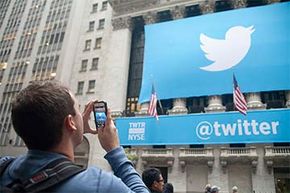When the first tweet was warbled back in 2006, no one had a clue how popular the new social media format would become. People were too busy poking fun at the name "Twitter" and the word for its news blasts -- "tweets." But Twitter pretty quickly became a popular way to chat with friends, strangers and even celebrities, plus stay on top of news and hot topics in popular culture.
Unfortunately, as with other social media, users began unintentionally offending others. Ever received a group email at work, drafted a reply to the sender criticizing another staff member copied in, and then accidentally hit "reply all" -- allowing the criticized staff member to read what you wrote? Similar mistakes are made on Twitter, too. Generally, these occurred when someone tweets a nasty message about, say, Kim Kardashian, referring to her as "@KimKardashian" instead of just "Kim Kardashian." When the @ symbol is used, the subject can see the offending tweet.
Advertisement
Of course, sometimes a sender intends to offend another. Such cyberbullying is increasingly common today. And getting out of hand. After actor Ashley Judd sent a rather innocuous tweet during a basketball game, saying her team's opponents were "playing dirty & can kiss my team's free throw making a--," innumerable Twitterites spat out hateful and sexually violent tweets at her [source: Alter].
Starting to rethink when and how you've used the @ sign in your tweets? Let's look at the origin of the symbol on Twitter, and how it should be properly and respectfully used.
Advertisement

